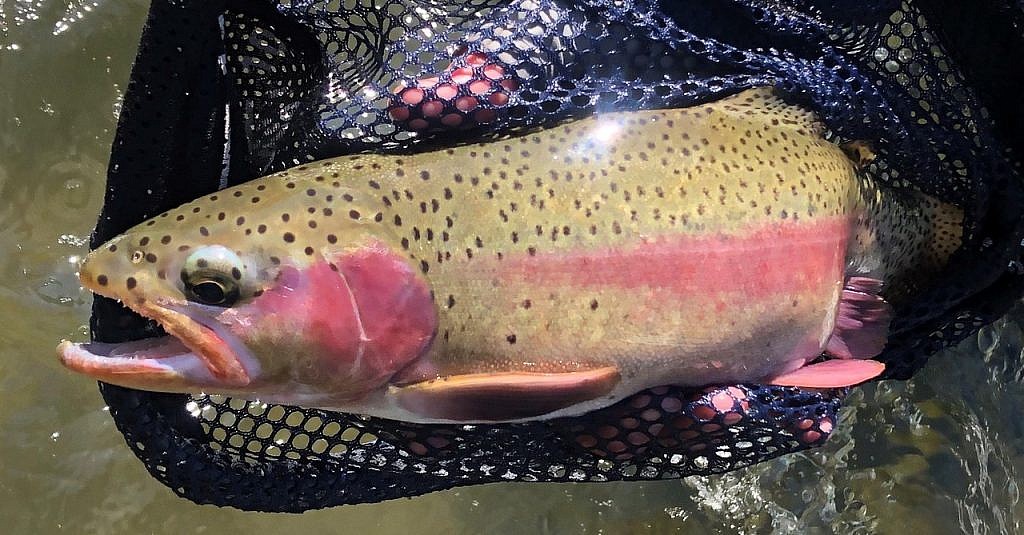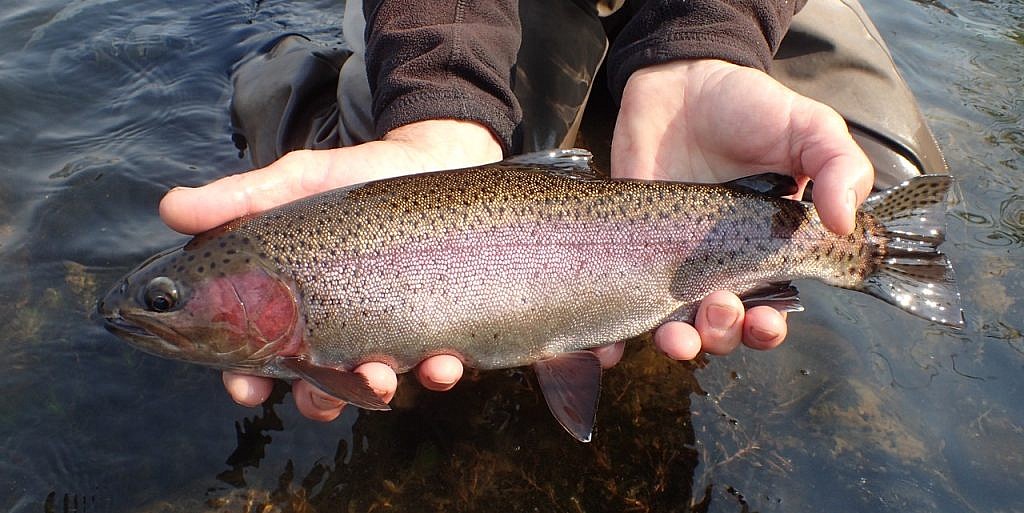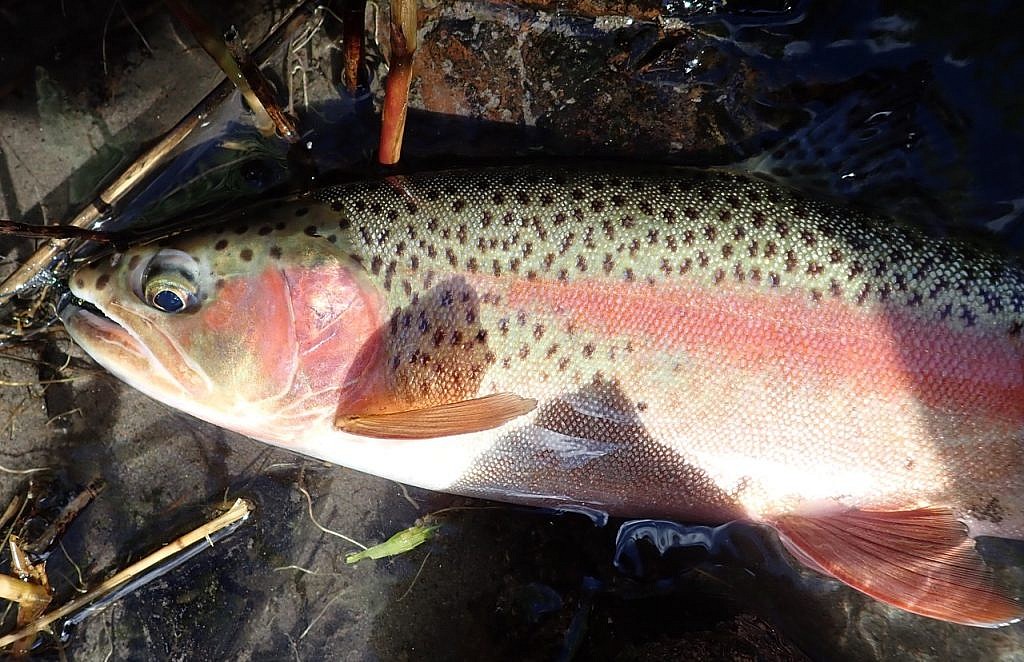
by Scott Sadil
Nobody likes a scold.
But it’s the time of year when, in my neck of the woods, many trout anglers decide to give the sport a rest, a month or so spent gardening, tying flies, fussing with the boat—even scouting up a turkey—rather than pestering our resident rainbows, now staging or getting down to serious business on their redds.
“But I saw this big one just lying there at the top of the island!” claimed a fellow I won’t name down at the fly shop. “I tried everything. It never even spooked!”
Exactly.

Every fish has its spawning season. And in many places it’s the period of time just before spawning when anglers find their biggest trout of the year, a chance to “hang a trophy,” you might say, even if you intend to release your catch, no matter what.
No doubt it’s a fine line. Salmon fishing, of course, is predicated on spawning runs. Steelhead fishing will put you on top of redds, with fish on them, if you follow fish to their ultimate destination, waters generally closed for that very reason.
So-called resident trout, however, are a different matter. In the long-ago past, spawning trout were more or less protected by what was once called Trout Season, a traditional and perhaps even logical response to harsh winter weather, at least in northern climates, where most trout were originally found. No need, here, to articulate some of the forces that blew that idea out of the water, other than to mention that the advent of catch-and-release trout fishing gave rise, as well, to year-round trout-fishing, rivers that never closed.

Where I live, that means come spring, more specifically April, I’m going to see lots of colored-up Deschutes redsides if I run a nymph or two through likely water. I’m often surprised to see dark fish, as well, in the middle of summer, which speaks to the diversity in any healthy fish population, one that exists because, unlike hatchery populations, it has never put all of its eggs, so to speak, in one basket.
But in April I can be pretty sure that any fish I touch, at least those chunky fourteen or sixteen inchers I so dearly love, is at a point in its annual biological cycle that it doesn’t need to be yanked off its lie—that it’s better served, in fact, by me leaving it entirely alone.
Restraint can be difficult. The things that happen in fall on brown trout spawning streams in Montana can make even a California angler blanch—although, come to think of it, that may be where half the Montana fly fishing community comes from these days, no?

A touch of temperance, anyway, never hurt anybody. At least now and then. The rewards, in this case, are well worth it. For what follows this brief period of abstinence can allow us opportunity to witness one of those elegant equations in nature that should help rekindle some sense of balance in a world that may well appear topsy-turvy if you get all of your news on television or social media.
At the same moment the majority of Deschutes redsides are finished on their redds, they find themselves in the midst of hordes of migrating salmonfly nymphs headed like migrating buffalo, in days of yore, to the banks of the river, where they will soon shed their nymphal shucks and become flying adults as part of the insect’s own annual spawning run. Lots of protein in just one of those nymphs, some of them as stout as your little finger.
Blessed with this bounty, big Deschutes trout, the ones that push twenty inches but rarely are, will gain a pound or more from the time they finish business on their redds to when the first adult salmonflies begin to rise from those tall grasses, waving in the late-spring wind, along the snake-infested banks.
That’s what you’re waiting for. Give the fish a break; let them get back into shape, ready for a fair fight.
Gray’s angling editor Scott Sadil believes that trout are like boats: the best ones are the prettiest ones.
